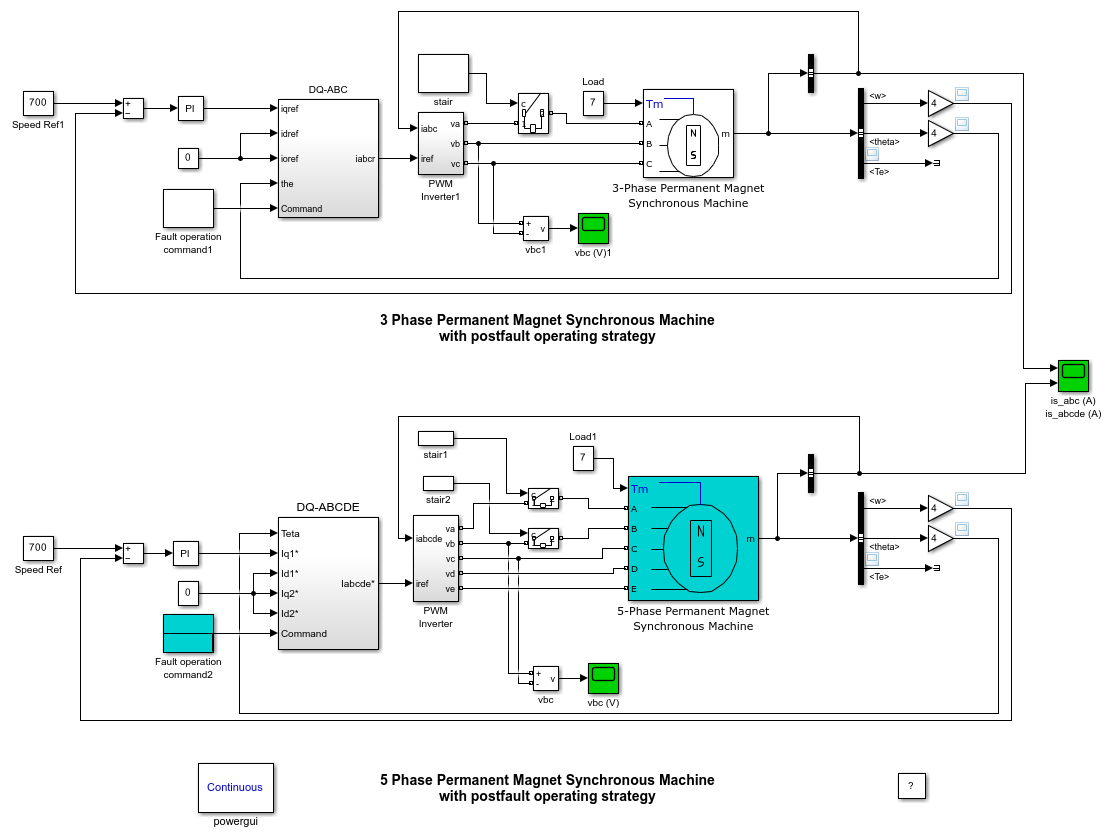Five-Phase Permanent Magnet Synchronous Machine
This example shows the use of the Five-Phase PMSM and the Three-Phase PMSM in a closed-loop speed and current control on two 4.4 kW industrial motors..
J-F. Doyon and Louis-A. Dessaint (Ecole de Technologie Superieure, Montreal)

Description
A five-phase motor and a three-phase motor both rated 4.4 kW are each fed by a PWM inverter. The PWM inverter outputs goes through Controlled Voltage Source blocks before being applied to the PMSM block's stator windings. The load torque applied to each machine's shaft is fixed to 7 N.m. Two control loops are used. The inner loop regulates the motor's stator currents. The outer loop controls the motor's speed.
1. Each machine starts under normal operation (all healthy phases).
2. At t = 0.06 second, phase ''A'' of both machines is disconnected.
3. At t = 0.09 second, each controller's current references are varied to compensate for the phase loss.
4. At t = 0.12 second, phase ''B'' is also disconnected from the five-phase machine.
5. At t = 0.15 second, the controller's current references of the five-phase machine are varied to compensate for the two phases loss.
Simulation
Observe that due to the change of current references during the two successive faults, the five-phase machine currents are increased to keep the electromagnetique torque at the same value and to prevent large ripple. Also, good speed regulation is maintained.
Less good results are observed with the three-phase machine. It can be seen that the electromagnetic torque has a lot of ripple which propagates to the regulated speed.
In summary the five-phase machine can be much more fault-tolerant than the three-phase machine.
